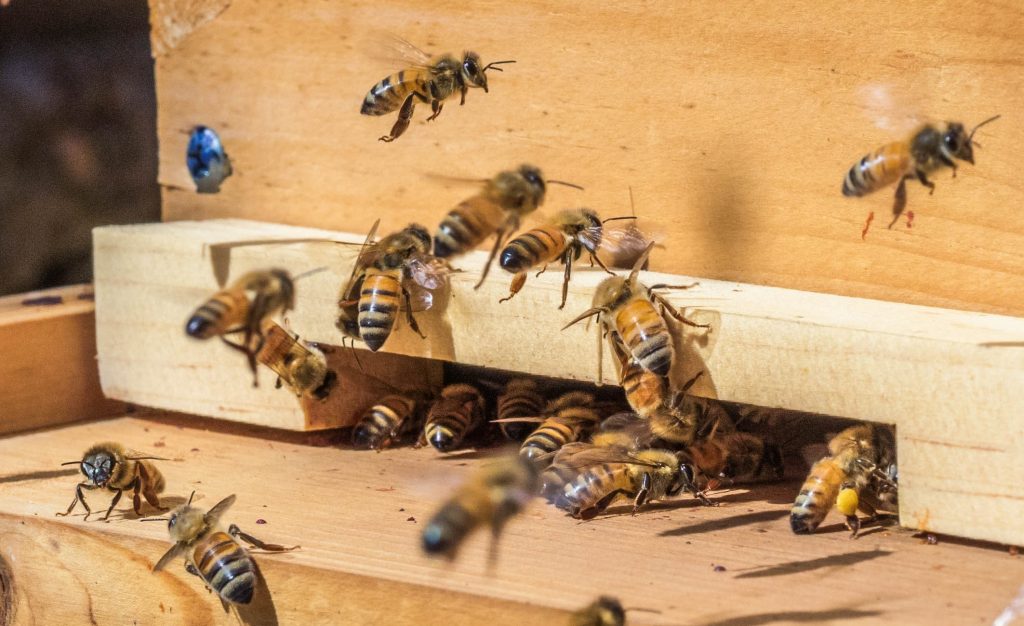How Do Bees Stay Warm In Winter?

When temperatures in the winter drop below 50 °F (10 °C), honeybees retreat to their hives and form a winter cluster to keep warm—sort of like a giant three-month slumber party. But it’s not all pillow fights and fun. The fate of the hive depends on how sufficiently the winter population has prepared for the cold. To survive and keep warm, the honeybee swarm must have a robust population of winter-ready bees, plentiful stores of honey to eat, and a secure hive. A successful winter cluster is made up of a generation of bees with different physiological characteristics from those of the summer population—bees that are a bit more plump to keep up the heat and have a longer lifespan to last the whole winter (4–6 months instead of only a few weeks).
The social world of honeybees is normally divided into three castes: workers, drones, and queens. But in the winter the male drones die off, leaving only the female castes: the workers and the queen. The all-female swarm of bees crowds together tightly to form the winter cluster, with the queen at the warmest, core section of the group and the workers shaking and shivering around to maintain a survivable heat.
At the center of the winter cluster, temperatures can climb as high as 90–100 °F (32–37 °C), while at the surface of the cluster, or mantle, the temperature fluctuates about the 50 °F mark. To sustain themselves and the heat, the cluster crawls and climbs in formation around the hive to reach their reserves of honey. For most of the winter, the cluster stays intact, but when temperatures outside rise above 50 °F, bees will leave the hive momentarily to relieve themselves of waste. In climates where the temperatures rarely, if ever, drop below 50 °F, the honeybee colony keeps working all year-round.
#Bees #LocalBees #TennesseeBees #TennesseeHoneyBees